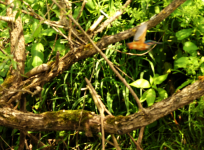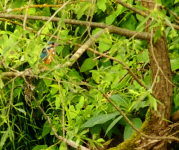McHeath
Well-known member
Hi all!
I'm very new to the game of photographing birds, and I'm fascinated by it. I'm also completely new to photography. I bought a Lumix FZ300 a few weeks ago and have spent many hours both reading the manual and about basic theory, then just taking the camera out and trying to put it all into practice.
I've found a beautiful stream and want to attempt to photograph one of the Kingfishers which I often see there. Based on my present knowledge, I'd go about it the following way:
Position myself in the vegetation on a bend at the end of a longish straight stretch. Use a moderate zoom and manually focus on the middle of the straight. Shutter speed of 1/2000+ (?), aperture as wide as possible for depth of focus (?), and let the camera take care of the ISO. Mode on 4K start/stop; then just fire a burst every time I hear an approaching whistle.
I'd be very grateful for suggestions which could increase my chances of success!
Regards,
McHeath
I'm very new to the game of photographing birds, and I'm fascinated by it. I'm also completely new to photography. I bought a Lumix FZ300 a few weeks ago and have spent many hours both reading the manual and about basic theory, then just taking the camera out and trying to put it all into practice.
I've found a beautiful stream and want to attempt to photograph one of the Kingfishers which I often see there. Based on my present knowledge, I'd go about it the following way:
Position myself in the vegetation on a bend at the end of a longish straight stretch. Use a moderate zoom and manually focus on the middle of the straight. Shutter speed of 1/2000+ (?), aperture as wide as possible for depth of focus (?), and let the camera take care of the ISO. Mode on 4K start/stop; then just fire a burst every time I hear an approaching whistle.
I'd be very grateful for suggestions which could increase my chances of success!
Regards,
McHeath







